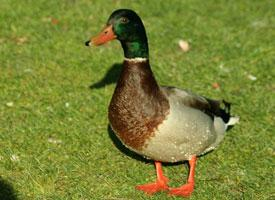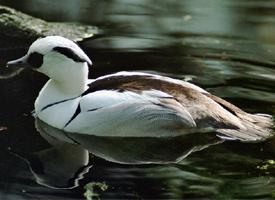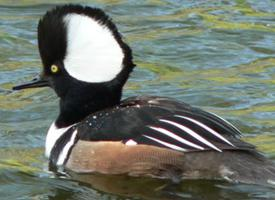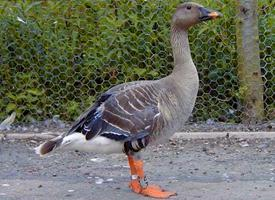
Váhy a míry
| Výška v kohoutku | od 50 do 60 cm |
|---|---|
| Hmotnost | od 690 do 1300 g |
| Délka rozpětí křídel | od 89 do 95 cm |
Popis zvířete
The Mallard (Anas platyrhynchos) is a medium-sized waterfowl species that is arguably the most familiar and widespread duck on the planet. This bird belongs to the family Anatidae, which includes ducks, geese, and swans. The Mallard's adaptability to various habitats and climates, along with its ease around human activity, has contributed to its prevalence across the globe. It is found in a wide range of wetlands, including parks, small ponds, rivers, lakes, and estuaries, as well as in various wild and urban environments.Physically, the Mallard is an easily recognizable bird, particularly due to the striking sexual dimorphism (differences in appearance between the sexes) it displays. Males, known as drakes, sport a glossy green head, white neck ring, chestnut-brown chest, gray body, and a distinctive yellow bill. During the breeding season, their plumage is particularly vibrant, making them stand out among the reeds and water. In contrast, females and juveniles are mottled brown with orange-and-brown bills, a coloration that provides excellent camouflage among the marshes and lakesides where they nest. Both sexes have blue-purple speculum feathers, bordered by white, visible in flight or when they stretch their wings.
Mallards are dabbling ducks, which means they feed mainly at the surface rather than diving underwater. Their diet is omnivorous, consisting of a wide variety of plant material, aquatic invertebrates, small fish, and insects. This adaptability in feeding habits is another key to their success as a species.
Breeding season for Mallards is in the spring, and their nesting habits are as adaptable as their diet. Females lay an average of 8 to 13 eggs, which are incubated for about 28 days. The nest is typically a shallow depression on the ground, lined with plant material and down feathers, located in concealed vegetation not far from water. Once the ducklings hatch, they are led to water by their mother and are capable of feeding themselves almost immediately, though they remain under her care for protection against predators.
Mallards are highly social birds outside of the breeding season, often forming large flocks on water bodies. Their quacking, particularly the females' loud "quack" sounds, is one of the most recognizable bird sounds. In contrast, the males produce softer, raspier sounds.
As a species, Mallards have played a significant role in the domestication of ducks, being ancestors to most breeds of domestic ducks. Their widespread presence across North America, Europe, Asia, and even parts of Africa, has made them a focal point for conservation efforts, particularly in regions where habitat destruction and pollution threaten waterfowl populations. Despite these challenges, the Mallard's adaptability has allowed it to maintain a stable population, and it is currently classified as Least Concern by the International Union for Conservation of Nature (IUCN).
The Mallard's ecological role extends beyond being a key species in wetland habitats; they are also a vital link in the food chain, serving as prey for a variety of predators, including humans. Hunting Mallards is a popular sport in many parts of the world, managed by regulations to ensure sustainable populations. Moreover, their interactions with other duck species are of scientific interest, particularly their ability to hybridize with closely related species, which has implications for biodiversity and genetic conservation.
In summary, the Mallard is a fascinating and adaptable bird, embodying the resilience and complexity of wetland ecosystems. Its widespread presence across the globe, striking appearance, and ecological significance make it an emblematic species of the avian world.
Podobná zvířata
Nové fotografie zvířat
Top 10 zvířat
- Chinese water dragon (Physignathus cocincinus)
- Galápagos tortoise (Geochelone nigra complex)
- Dolphin gull (Leucophaeus scoresbii)
- Japanese macaque (Macaca fuscata)
- Colombian red howler (Alouatta seniculus)
- Sea urchins (Echinoidea)
- Moustached guenon (Cercopithecus cephus)
- Diana monkey (Cercopithecus diana)
- Common reed warbler (Acrocephalus scirpaceus)
- Common house mosquito (Culex pipiens)


